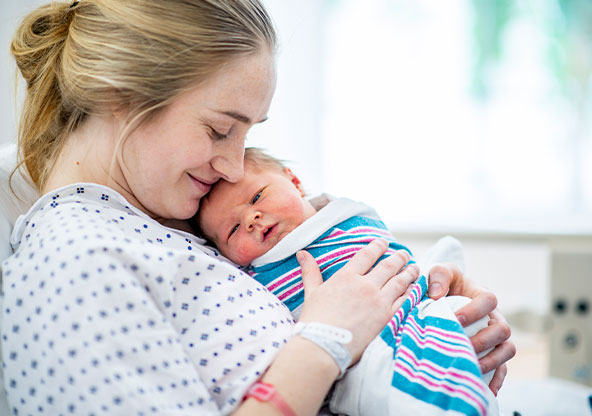Heart Screenings for Newborns

Symptoms of critical congenital heart disease can be different from what adults experience.
Congenital heart disease (CHD) affects the structure and function of a baby’s heart. It is the most common type of birth defect and babies born with these conditions are now living a longer and healthier life, thanks to advancements in cardiac care.
CHD affects about 1 percent of newborn babies per year in the United States. Approximately one out of every four babies requires some type of procedure in the first year of life; this is known as critical CHD.
Many newborns with critical CHD have symptoms and are diagnosed soon after birth; however, a significant number of newborns are discharged from the hospital without being diagnosed with CHD until they become very ill.
Symptoms of critical CHD can be different from what adults experience with heart disease and are often symptoms children have with other illnesses as well such as breathing fast, working harder to breathe, not eating well, getting tired easily, looking pale, and acting lethargic.
Congenital heart disease screening
A delay in diagnosis can increase their risk of serious illness and death. This is why newborn screening for critical congenital heart disease using a monitor that checks oxygen saturation was developed and is currently a state-mandated guideline in Texas.
The American Academy of Pediatrics (AAP) guidelines are the most commonly used recommendations for critical CHD screening:
- Screening is performed after 24 hours of life or as late as possible if early discharge is planned.
- Be aware that screening within the first 24 hours of life can be less accurate.
- One probe is placed on the right hand and one is placed on either foot, at the same time or one right after the other.
A positive screen includes:
- Oxygen saturation less than 90 percent in either extremity; or
- Oxygen saturation between 90 – 94 percent in both upper and lower extremities on three measurements, each separated by an hour; or
- Oxygen saturation difference greater than 3 percent between the upper and lower extremities on 3 measurements, each separated by an hour.
A newborn with a positive screen should not be discharged from the hospital and should undergo further testing (e.g. an echocardiogram or ultrasound of the heart, an X-ray, lab tests) or consultation (by a pediatric cardiologist) to understand the cause of the low saturation.
